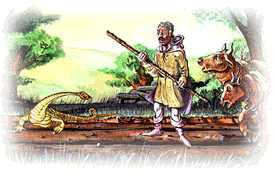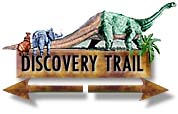


Dragons and dinosaurs
Italy

A scientist named Ulysses Aldrovandus carefully described a small “dragon” seen along a farm road in northern Italy. The date was May 13, 1572. The poor, rare creature was so little that the farmer killed it just by knocking it on the head with his walking stick. The animal had done nothing wrong but hiss at the farmer’s oxen as they approached it on the road.
The scientist obtained the dead body and made measurements and a drawing. He even had the animal mounted for a museum. It had a long neck, a very long tail and a fat body. The skeletons of a number of ancient reptile-like creatures have similarities to this basic description.1

NEXT - China…
The following are some of the details which are available in the documentation by Aldrovandus (sometimes spelled Aldrovandi):
The dragon was first seen on May 13, 1572, hissing like a snake. He had been hiding on the small estate of Master Petronius near Dosius in a place called Malonolta. At 5 PM, he was caught on a public highway by a herdsman named Baptista of Camaldulus, near the hedge of a private farm, a mile from the remote city outskirts of Bologna. Baptista was following his ox cart home when he noticed the oxen suddenly come to a stop. He kicked them and shouted at them, but they refused to move and went down on their knees rather than move forward. At this point, the herdsman noticed a hissing sound and was startled to see this strange little dragon ahead of him. Trembling he struck it on the head with his rod and killed it. Aldrovandus was surprised that the reptile did not run when he saw the man, but instead bravely raised its head and stood its ground.
Aldrovandus reported that it was definitely a reptile and the first of this type that he had seen. The creature was rather strange in appearance, but seemed to be completely harmless. It was a small specimen; Aldrovandus believed that it was only a baby judging by the incompletely developed claws and teeth. The corpse had only two feet. It moved by slithering like a snake and by using its feet, he believed. It could hiss like a snake and hold its head up in the air. Its slender neck had white markings like circling its neck. It had a very long tail and neck and a thick body. Aldrovandus mounted the specimen and put it on display for some time in a museum.
—Ulysses Aldrovandus, The Natural History of Serpents and Dragons (Bologna, Italy: Mark Antony Bernia, 1640), p.402.
—Henry F. Scott-Stokes, Perseus: Of Dragons (NYC: E.P. Dutton and Co., 1925). Has a loose and imcomplete translation of the account.
Copyright ©, Paul S. Taylor, Films for Christ. All rights reserved.